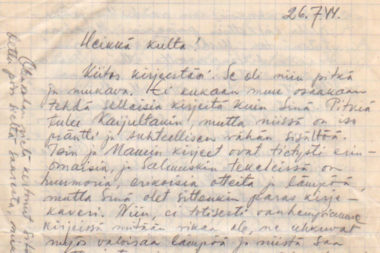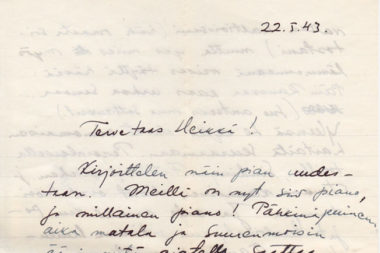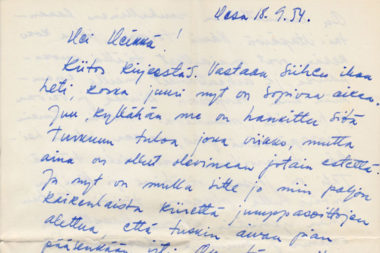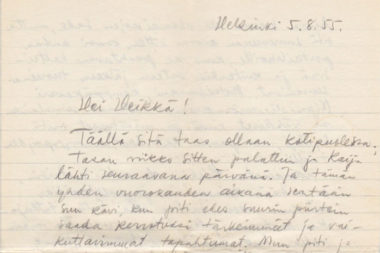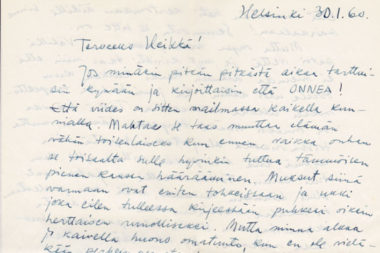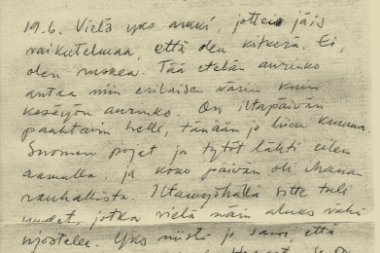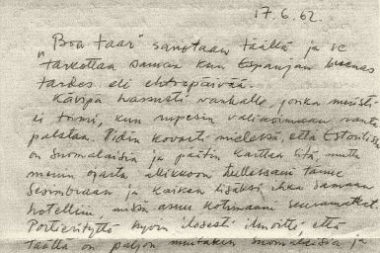Correspondence of Tom of Finland

Tom of Finland is one of Finland’s most internationally renowned artists. It was the commercial artist and artist Touko Laaksonen (1920-1991) who was the master of homoerotic art behind the pseudonym. A lot of his correspondence, spanning six decades, has survived.
The letters give readers glimpses of Laaksonen’s life as a young man, a soldier in the Continuation War, a musician, a commercial artist, a brother, a well-loved uncle, a friend, and finally a sick old man. Laaksonen’s letters reveal him as a modest and compassionate man, who had a great sense of humour and who loved his family. Music was later replaced by art that left an impression and legacy far greater than he could ever have imagined.
- Letters read in Finnish by actor Ville Virtanen
- Letters read in English by Mikael Davies
- Touko Laaksonen’s letters: Tom of Finland Foundation
Susanna Laaksonen wrote a book about Touko Laaksonen’s correspondence, Salaisuuksin suljettu – Kirjeiden Tom of Finland (Like Kustannus, 2017, ‘Sealed with a Secret – Correspondence of Tom of Finland’). Listen to an interview in which Suvi Jalli, the project manager of the Finnish Postal Museum, interviews journalist Susanna Luoto, a representative of the Tom of Finland Foundation. Listen to the interview here (the video has English subtitles. Press the subtitles on the video)



